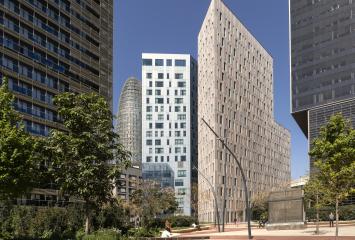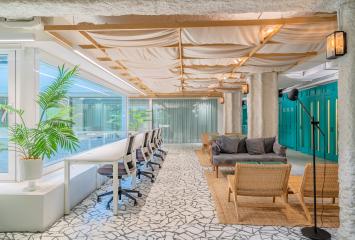Lighting and energy efficiency
A building’s energy efficiency is one of the most important issues when choosing an office. Knowing for sure that the space you will occupy fulfils basic energy efficiency criteria such as a responsible consumption of water and electricity, waste generation and respect for acoustic or thermal impact may determine whether or not an office is chosen.
Electricity consumption is one of the issues of greatest concern. In an office the lights are on all day. Minimising expenditure on lighting and light pollution are two of the aspects of most concern.
Improving lighting energy efficiency can be simpler than you may think at first:
- Make sure you have good natural light. Choose an office that is scarcely touched by the sun as this may not only increase consumption, but also affect users’ wellbeing.
- In the zones of the office where there are no frequent users, you can install movement sensors which means the lights will come on only when someone passes through the zone.
- Check that the light fittings are the best suited for your type of space. Perhaps you are using more resources than you really need.
- Choose low-consumption lights and lamps. LED lighting offers savings and energy efficiency.
By putting all these aspects into practice and making a pledge to other things such as the use of renewable energies, you can ensure that your office fulfils the objectives of optimal wellbeing for users while reducing costs and encouraging efficiency.

